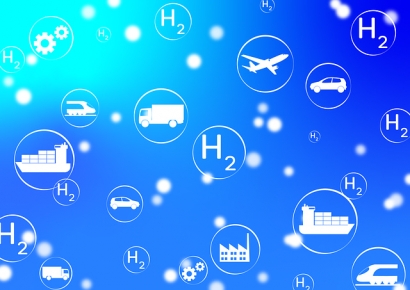
Hydrogen is a ubiquitous energy vector that can be utilized in diverse applications beyond ‘traditional’ applications including those that require a high energy density, ranging from serving as a feedstock for chemical reactions, producing a range of synthetic fuels and feedstocks.
Importantly hydrogen’s greatest advantage is that it can be electricity grid independent, thereby allowing new energy distribution networks to be deployed and enabling greater renewable energy integration. It is this energy system advantage that delivers enhanced system flexibility and storage, which support further deployment of variable renewable energy (VRE); contribution to energy security; reduced air pollution; and other socio-economic benefits such as economic growth and job creation, and industrial competitiveness.
Hydrogen has many obstacles to navigate in order to reach its full potential and importantly for communities to enjoy the full benefit of cleaner power, commercial opportunities and jobs growth. If green hydrogen is to make a significant contribution to achieving a net zero energy supply in the future, it will need to be produced (1) cost-efficiently (2) in large quantities, and (3) using low-carbon methods. Additional obstacles include the transport and storage of hydrogen but the biggest of these obstacles is cost. Currently Green Hydrogen is expensive to generate, transport and use. This is no different to any new technologies as they come to market, cost is almost always the greatest initial hurdle but costs fall significantly, as the technology deployment pathway gathers speed.
As we create the EU Green H2 Highway, centrally generated green hydrogen is being used to satisfy large-scale geographic and technology specific demand for example in public transport with hydrogen-powered buses. However as with other technologies that tackle our CO2 footprint this requires government subsidies to kick-start the process and to sustain through the growth phase of implementation.
Many governments and communities across Europe have high hopes and expectations that hydrogen may become the energy source of the future. The EU Commission has recently presented a new strategy for using hydrogen as a source of energy. Many policy makers regard Green Hydrogen as a ‘silver bullet’ but Mark Welsh, from Irish based company Energia, which is the leading industrial partner in the innovative GenComm project, describes green hydrogen as ‘silver buckshot.’ Welsh uses this term to reflect the many solutions where green hydrogen can be utilized as part of a hybrid solution to achieve net zero by 2050.
Welsh states,” Green hydrogen is a key ingredient in the recipe for net zero in our energy mix. As an energy vector it can be used as a single solution or as part of a ‘solution of choice’ or in a power-to-X (P2X) solution where the consumer chooses what energy mix is best suited to their technical, geographical or environmental need. In short green hydrogen has a myriad of applications and is a key energy decarbonisation catalyst closing one of the many gaps in the energy transition strategy.”
As Europe transitions to net zero powered by green hydrogen as an energy vector over the next 50 years we will witness a fundamental transformation in our energy system. The hydrogen economy has the potential to deliver national energy security, reduce environmental impact, and create significant commercial and job creation opportunities. There are major obstacles on the path to achieving our hydrogen economy, the path will not be simple or straightforward but the rewards far outweigh the short-term adjustments that we must make.”
Given the broad spectrum of energy opportunities and resultant Co2 reduction benefits it is easy to see where the rising hope for green hydrogen as a ‘silver buckshot’ is coming from. As the technology development, generation and deployment use widens the current obstacles, namely cost will be navigated. Many of these obstacles that are currently being cited in opposition to hydrogen use will fade as costs decrease whilst the hydrogen economy blossoms. The primary obstacle of cost of production and implementation can be mitigated by spreading the costs over the longer energy transition journey, a transition journey we all must make. The costs of not doing so far outweigh the costs of transition.
In summary, we should reposition the discussion and not highlight the short-termobstacles to green hydrogen deployment but rather address the pollution effects of our current energy mix and rise to the challenges of successfully achieving an energy transition to net zero. A just transition where no communities or users are left stranded and all have access to a green energy solution capable of meeting their needs for security, growth and sustainability. Rather than look short term to hydrogen use we need to look at hydrogen optimisation, where, when and how best to deploy green hydrogen development, deployment and use.
About the author: Paul McCormack is GenComm Project Coordinator – Hydrogen Ireland Director

